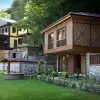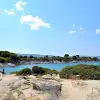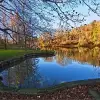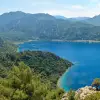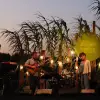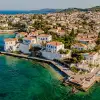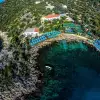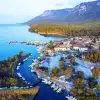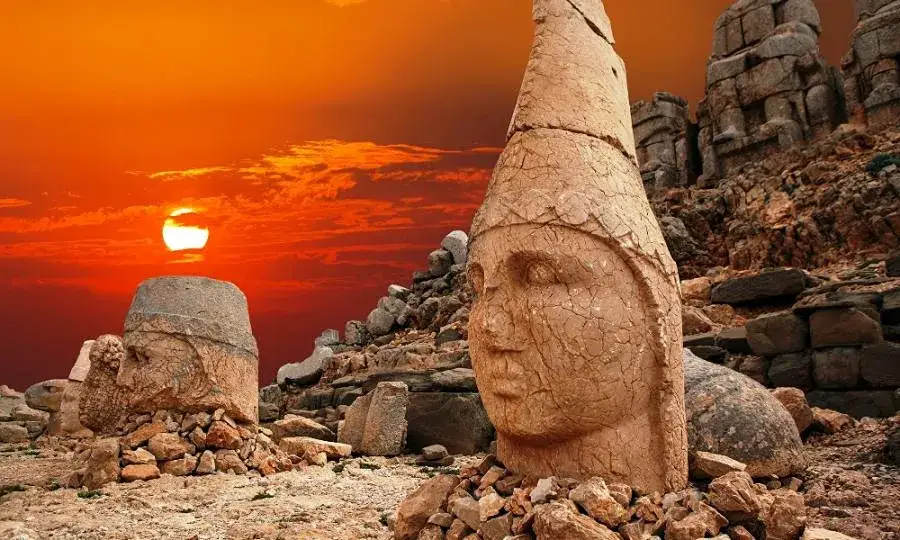
Gap Tour Travel Recommendations: Where to Visit, Where to Stay, What to Eat?
Southeastern Turkey tells a unique story in every corner. If you want to encounter history, meet different cultures, and take an unforgettable journey, the GAP Tour offers a true travel experience. With this route, you are not only visiting the cities here, but also touching the thousands of years of history of Anatolia. The GAP Tour route usually includes Diyarbakır, Batman, Mardin, Şanlıurfa, Adıyaman, Gaziantep, Malatya, and Antakya. As you wander the stone streets of Diyarbakır, you can almost feel the rhythm of time. Watching the sunset from the terraces of Mardin overlooking the Mesopotamian Plain is truly magical. When you encounter Gaziantep's cuisine, you actually get closer to the city's deep culture. Watching the sunrise from the summit of Mount Nemrut in Adıyaman, you witness one of the most special moments where nature and history meet. Hatay is known for its historical and cultural richness. However, reconstruction is still ongoing in some areas after the earthquake. Antakya's historical texture and cultural diversity are still felt. Hatay is a place where different beliefs and languages meet, taking steps to regain its former vibrancy. Your visit means both support for the region and witnessing its cultural heritage. "This journey is more than a vacation. With every step you take on the GAP route, you encounter a different story, a warm smile, and a sincere table.
GAP Tour Roadmap
Which Cities Does the GAP Tour Cover?
When we talk about the GAP Tour route, don’t just think of city names. Each stop stands out with its own culture, history, and flavors. This route typically includes cities like Diyarbakır, Mardin, Şanlıurfa, Gaziantep, Adıyaman, and Batman. Some tours may also cover Malatya, Hatay, or Adana. Below, we’ve detailed what to do, what to eat, and which places are must-sees in each city.
Gaziantep
Visiting Gaziantep and only seeing a museum or two would be an injustice to this city. It’s a place where every street resonates with history and every bite reflects its culture. At the Zeugma Mosaic Museum, your eyes get lost in the intricate details on the floor, while at the Medusa Glass Works Museum, you’re left in awe of the elegance of time. Sites like Dülük Ancient City and Pişirici Kasteli make you feel like you’ve stepped back into the past. You haven’t truly experienced Gaziantep until you wander its streets, hear the sound of the hammer on the anvil in Bakircilar Bazaar, or sip slowly brewed menengiç coffee at Tahmis Coffee House. The heart of the city beats in its bazaars. At Bakircilar Bazaar, every corner showcases handcrafted items. In the nearby Gümrük Han, you can see a variety of crafts side by side, from kutnu fabric to mother-of-pearl inlay. Across from the han, Antepsepeti gathers products from different bazaars of Gaziantep a lifesaver if you’re short on time. For a coffee break, don’t miss Kahveci Seddar Bey, where two distinct coffees are brewed together in a single cup without mixing, creating a unique dual-colored coffee experience. Gaziantep’s caves add another cultural layer. Walking through the cave beneath the Şahinbey War Museum, you can sense the spirit of that era. Another notable cave is Kaleoğlu Cave, a bright, spacious café that receives no direct sunlight. At the Hamam Museum, you get a closer look at Ottoman bath culture. Culture in this city isn’t confined to museums it’s also found in nature-integrated historic sites like Rumkale, located on the banks of the Euphrates, which played an important role in the spread of Christianity. The Gaziantep Toy Museum offers a nostalgic journey: seeing the past versions of toys you played with as a child feels like traveling through time, often bringing an instant smile. Housed in an old Antep house, the museum feels even more special. Finally, the Yesemek Open-Air Museum offers a completely different experience. With hundreds of statues and the remains of an ancient sculpture workshop, you begin to realize that stones have a language of their own. It’s no surprise that it’s on UNESCO’s tentative list.
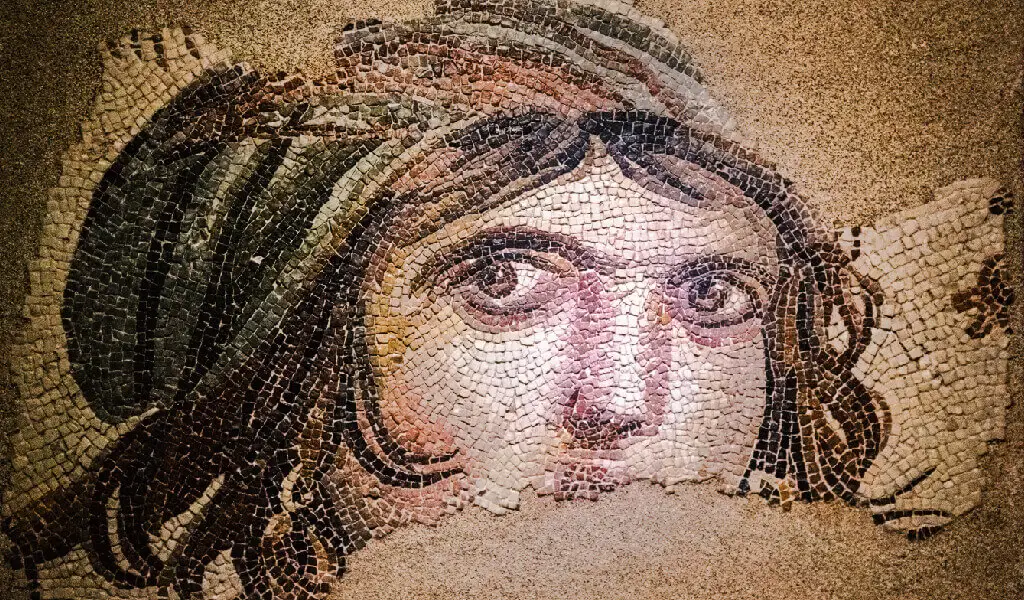
Zeugma Mosaic Museum
With so much culture around, you'll get hungry quickly. And that's a good thing, because in Gaziantep, getting hungry is the first step on a culinary journey. For katmer, stop by Metanet or Zekeriya Usta. People line up for the chickpea dürüm. Don't dismiss the chickpea dürüm it was quite delicious. When it comes to kebabs, it's Çulcuoğlu. For liver, Haydar Usta, which opens at dawn, really surprised us. The liver runs out before 7 a.m., so you have to go early. Halil Usta is the best for küşleme. The meat melts in your mouth, and the taste lingers on your palate. While you're here, don't leave without trying the simit kebab. Hışvahan is perfect for a special dinner. It's an old inn with three separate spaces, each with a different vibe: one has live music, one has a DJ, and the other is a susamhane. They serve everything from grandma's home cooking to business dinners. The castle view is a bonus. Alcoholic beverages are available. A good choice for an enjoyable evening. At İmam Çağdaş, try the semsek, yogurt-based Ali Nazik classic but worth every bite. Dukat Kebap is very close to Halil Usta. With lahmacun, beyran, kebab, and katmer, it offers a perfect menu. Yesemek Lokantası, right next to İmam Çağdaş, stands out for its local dishes. If you want to end your meal on a sweet note, try the pistachio acıbadem cookies at Orkide Pastanesi. They are light and have a local flavor.
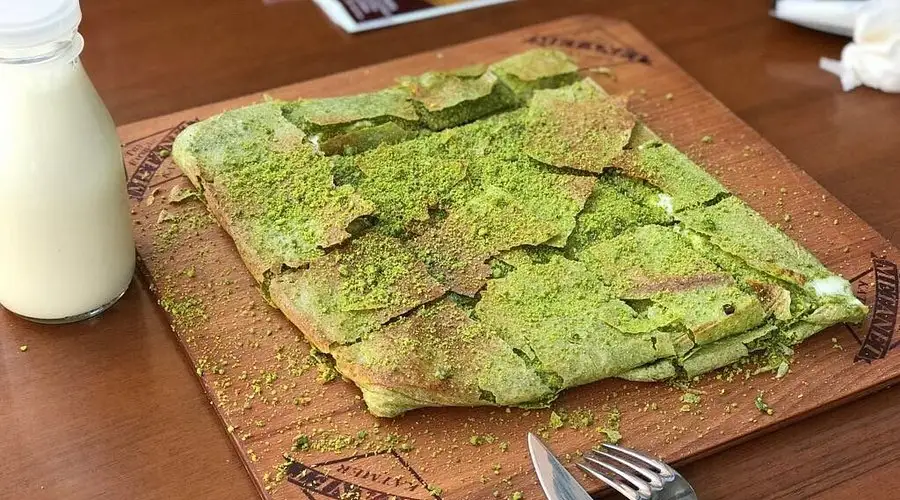
Metanet Katmer
Şanlıurfa
One of the most special stops on the GAP tour, Şanlıurfa is considered the heart of history and faith tourism. The city takes visitors on a journey through time with its centuries-old stories and cultural riches. Don't leave Şanlıurfa without first visiting Balıklıgöl. Known as the place where Prophet Abraham was thrown into the fire, this sacred site has become a symbol of the city. Aynzeliha Lake, located right next to Balıklıgöl, is also a must-see. These two lakes are among the places that best reflect the mystical atmosphere of Şanlıurfa. If you want to immerse yourself in history, you can visit important sites such as Şanlıurfa Castle and the tomb of Prophet Eyyüp. Prophet Eyyüp's stone of patience and cave of suffering deeply affect those who visit the city in a spiritual sense. The Şanlıurfa Museum stands out with its archaeological and ethnographic riches. Models of Göbeklitepe and artifacts from different civilizations in the region are exhibited here. You also have the opportunity to see the world's most exquisite mosaics up close at the Haleplibahçe Mosaic Museum. Şanlıurfa's historic mosques are also among the places to visit. Rizvaniye Mosque and Halil-Ür Rahman Mosque are must-see places with their architecture and stories that blend with the city. Mevlid-i Halil Complex is an important place to visit as it houses the cave where Prophet Abraham is said to have been born.
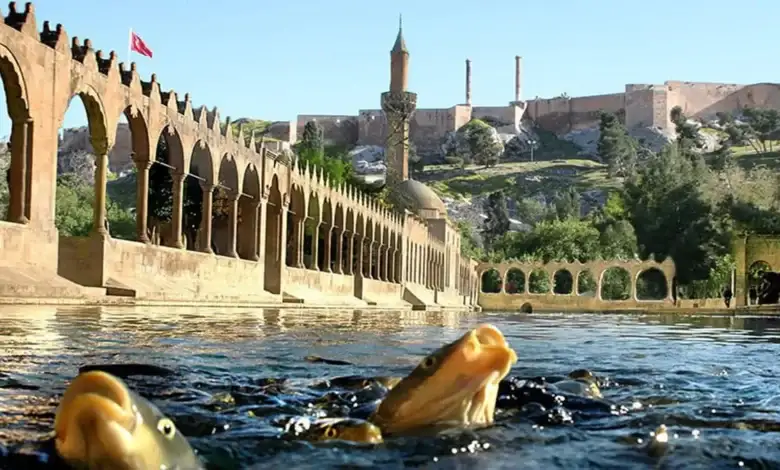
When it comes to food and drink, Urfa is a city where traditional flavors come together in their most authentic form. Places like Livva Restaurant, Tatvera Künefe, and Beyazıt Katmer are among the favorites in the city. You can try the best simit katmer at Beyazıt. Ciğerci Aziz and Paflar Ciğer are must-visit places for liver lovers. In almost every corner of Şanlıurfa, you can find lahmacun masters who are highly skilled in their craft. Minced meat and vegetables mixed with special spices, spread on thinly rolled dough, create that perfect lahmacun flavor. Sümer Pide is a popular choice. Yuvalak köfte is one of Şanlıurfa's most labor-intensive and special flavors. Made from lean lamb meat with the fat and sinew removed, these meatballs have a special place in the city's cuisine, both for their taste and their preparation process. Don't leave without trying lebeni soup, known as cold yogurt soup. This soup, which is refreshing and light in the summer months, is one of the staples of Urfa tables. The bostana served alongside the meals completes the table as a refreshing salad. Kebabs hold a special place in Şanlıurfa's cuisine, and keme kebab, made with keme mushrooms that herald the arrival of spring, is one of the region's most beloved kebabs.
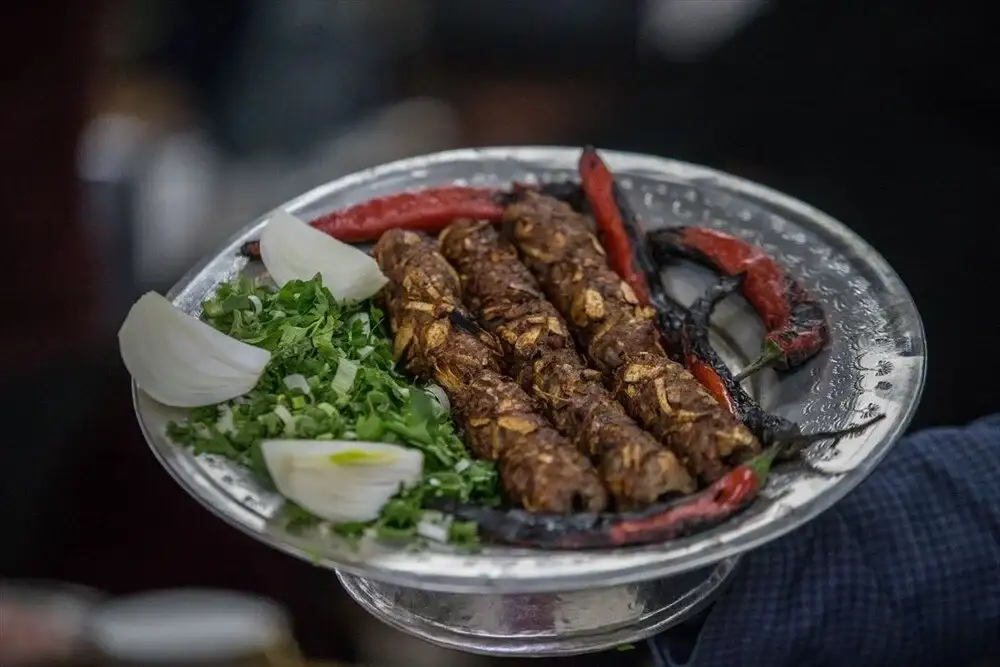
Keme Kebabı
Mardin
Exploring Mardin and its surroundings allows you to touch the region’s history, culture, and flavors. Mardin is essentially divided into two parts: Old Mardin, which fascinates tourists with its stone houses and narrow streets, and New Mardin, where modern apartment buildings are located. Old Mardin, like Venice or Jerusalem, is entirely designated as a “protected site” and has hosted numerous civilizations over 12,000 years. Its stone buildings and streets transport visitors back in time. While exploring the area, make sure to visit the Sakıp Sabancı City Museum, Mardin Museu
m, and Mor Behnam Church. The Sakıp Sabancı Museum was originally built as a cavalry barracks during the reign of Sultan Abdulhamid II and has now been transformed into a museum. It offers a wealth of information on Mardin’s cultural life. The museum’s lower floor houses an art gallery that hosts temporary exhibitions. Nearby, the Hatuniye Madrasa is one of the rare sites combining a courtyard, a mosque, and a madrasa, offering a serene atmosphere. Here, you can see a footprint believed to belong to the Prophet Muhammad. The tombs of the Artuqid Sultan and his mother are also located in the same courtyard. If your time is limited, this site can be added to a later visit list. Walking through the narrow streets of Mardin, the eye-catching stonework of the Old PTT Building, built in 1890 by Armenian architect Lole and used as a post office for many years, immediately draws attention. On the way to Zinciriye Madrasa, you can also visit the Mardin Maturity Institute, where traditional carpet-weaving techniques are demonstrated. The Mardin Museum, constructed from yellow limestone with unique decorations, is a captivating structure. Visitors can even mint their own coin here. Numerous churches are scattered throughout Old Mardin, among which Kırklar Church built in 569 in honor of the Syriac saints Mor Behnam and his sister Saro attracts the most visitors. It is generally open after 1 PM, as morning hours are reserved for worship, and photography is strictly prohibited. Latifiye Mosque, also known as Abdullatif Mosque, is one of the city’s important religious structures, with a history of nearly 700 years. Its minaret is 300 years old and its architecture is exceptionally elegant. All of Mardin’s stone houses face south toward Mesopotamia. The stone’s natural properties keep interiors cool in summer and warm in winter. The intricate motifs on the houses are made possible by the stone’s softness, which allows for detailed carving. Streets like Mut Street, between Latifiye and Ulu Mosques, and Culture Street near Mardin Museum, become favorites for photographers when lit at night. Mardin’s local stone, known as “nahit stone,” is soft when first extracted, making it easy to carve, but hardens over time due to weather conditions. Major historical structures like Kasimiye Madrasa and Deyrulzafaran Monastery stand as the region’s spiritual and cultural fortresses. Inside Deyrulzafaran Monastery, the Sun Temple holds great significance as the place where the Syriacs worshiped before adopting Christianity. The temple is underground, accessible via stairs, and its massive stones symbolize the building’s strength. A little farther away, Elbeğendi (Kafro) Village and Dara Ancient City are worth visiting. Kafro Village is a surprising stop with its excellent pizzas. In a quiet village with stunning natural views, Kafro’s Pizzeria offers relaxing music and delicious pizzas that are a must-try. Dara Ancient City is a favorite for history enthusiasts, with impressive Roman-era ruins. Its underground water cisterns, theater, and walls convey traces of life spanning thousands of years.

Mardin’s cuisine is as rich and flavorful as its culture. Kaburga dolması is a delicious dish made using the rib bones of lamb. İçli köfte (stuffed meatballs) is prepared in two ways in Mardin: fried (Irok) and boiled (Ikbebat). Kibbe and Kihtel are variations of içli köfte, each with unique touches, and are must-try specialties. Alluciye is an original dish combining plums and meat. Lebeniye soup is a light, cold soup made with strained yogurt. Harire dessert blends molasses, sugar, flour, and cinnamon, decorated with walnuts for a local treat. Mırra is a bitter coffee brewed multiple times and served in small handled cups. Beverages are just as important as the dishes. Syriac tea “Zafaran” is especially recommended at Kana Cafe. This aromatic tea, infused with saffron, cinnamon, and okra flowers, pairs perfectly with the accompanying Syriac pastry. Kebapçı Yusuf Usta is famous for its kebabs, and Kebapçı Rıdo, located on the main street, is also a must-visit. If you want to taste Syriac wine in a different, bohemian setting, İzla Art is the place to go. On your way back from Mardin, coffee shopping is essential. Dibek Coffee blends can be found at venues like Babil Kahve and Davut Selim, offering flavors that are worth every penny. For dessert lovers, Mardin’s famous almond candy, “Hayalet Şeker”, is a must-try. Its color transitions from blue to light blue, thanks to natural dye extracted from the roots of the lahor tree, giving it a unique appearance. Cinnamon, tiramisu, and ginger-flavored varieties delight the taste buds and make for a truly memorable treat.
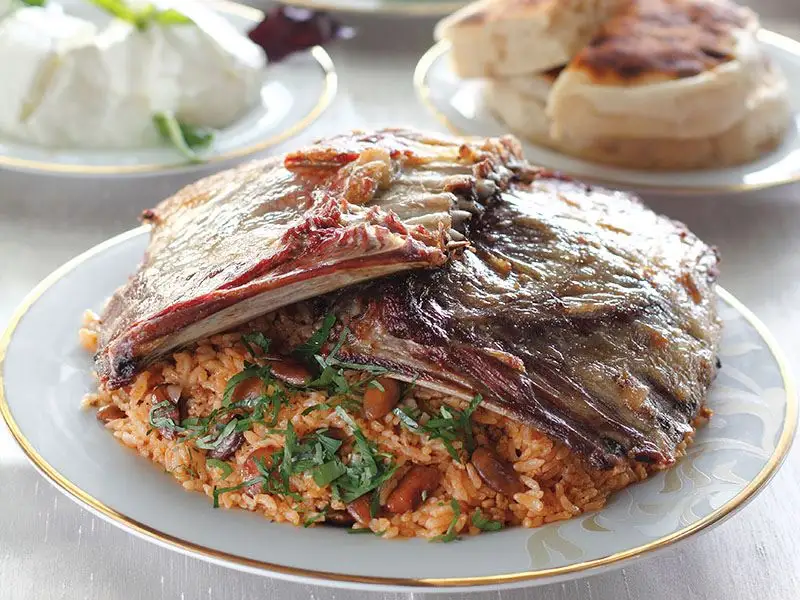
Diyarbakır
One of the most remarkable stops on the GAP region tour is Diyarbakır, a city that has hosted numerous civilizations throughout history and captivates visitors with its cultural richness. The Diyarbakır Grand Mosque (Ulu Cami) holds great significance as the oldest mosque in Anatolia. When Muslim Arabs took control of Diyarbakır in 639, the Martoma Church, left by the Armenians, was converted into a mosque. The building has undergone several restorations over the centuries. In 1091, under the orders of Seljuk Sultan Melikşah, a comprehensive renovation was carried out. Although a fire and earthquake in 1115 damaged many of the intricately decorated stone columns, the mosque’s historic character has been preserved. Another remarkable feature is the sundial created by Al-Jazari, considered the father of cybernetics. The Ahmet Arif Museum and Art House, honoring the famous poet, is located in a 120-year-old Diyarbakır mansion. Restored by the Ministry of Culture and Tourism and opened to visitors in 2011, it exhibits the poet’s personal belongings, handwritten poems, and photographs of many other poets from Diyarbakır. Similarly, Cemil Paşa Mansion, built between 1888 and 1902 from basalt stone, with a spacious courtyard and a garden with a pool, stands as one of the finest examples of the city’s civil architecture from the Ottoman period. In the authentic atmosphere of Suriçi, Sülüklü Han, constructed in 1683 by Hanilioğlu Mahmut Çelebi and his sister Atike Hatun, offers a unique setting for coffee or Syriac wine. Restored and open since 2010, it is a popular spot for visitors. İçkale, considered the heart of Diyarbakır, is the city’s first settlement and administrative center. This historic site, consisting of 20 towers and 4 gates, has been restored into an open-air cultural center with museums, cafeterias, and historic churches. Adjacent to İçkale, the Diyarbakır Archaeology Museum houses a vast collection spanning from prehistoric periods to the Ottoman era. Recent excavations have uncovered the Körtik Tepe artifacts, providing important evidence of how early humans transitioned to settled life in Anatolia. Among the city’s historic churches, Saint George Church, although its dome has collapsed, still attracts history and art enthusiasts. The Şeyh Mutahhar Mosque, with its unique four-legged minaret, stands out as a one-of-a-kind example in Anatolia; legend has it that passing under the minaret seven times fulfills one’s wishes. The Virgin Mary Syriac Ancient Church, home to a 20-person Syriac community, dates back to the Byzantine era and is an important example of Syriac heritage in Diyarbakır, featuring icons, woodwork, and an intricately designed door. Diyarbakır Fortress, with walls nearly 9,000 years old, is known as one of the longest and widest defensive walls in the world, second only to the Great Wall of China. Comprising inner and outer sections, it features four main gates: Dağ Gate, Urfa Gate, Mardin Gate, and Yeni Gate. In 2015, the fortress, along with the Hevsel Gardens, was added to the UNESCO World Heritage List. The Hevsel Gardens have been cultivated for 8,000 years and serve as a natural habitat for 180 bird species and numerous reptiles. Among the historic bridges, the Ten-Eyed Bridge (On Gözlü Köprü) spans the Tigris River, dating back to 1065. Malabadi Bridge, built in 1147 during the Seljuk period, is an engineering marvel and the largest surviving stone arch bridge today. Its reliefs and the historic structures alongside it transport visitors on a journey through time. The Hz. Süleyman Mosque and the Tombs of 27 Companions (Sahabe Türbeleri) offer a unique spiritual atmosphere, as the companions are buried in one location, making it a rare sacred site in Turkey. Diyarbakır’s city walls, standing resilient through centuries, testify to the city’s well-preserved historic texture. Carved doors, Syriac inscriptions, wooden mihrabs, and other historical details reveal the city’s multi-layered cultural heritage.
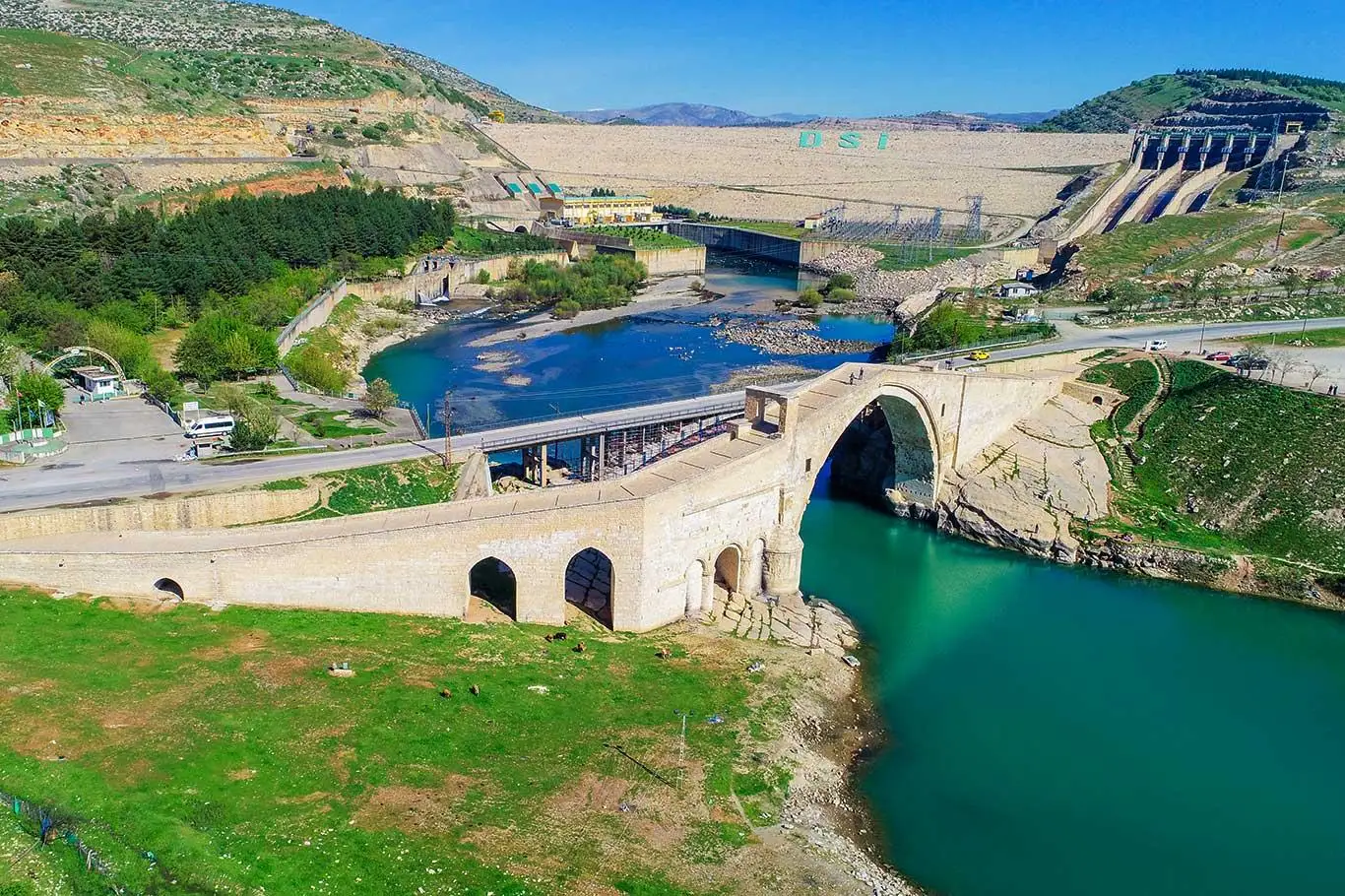
Malabadi Bridge
Diyarbakır leaves an unforgettable taste in your mouth as well as offering a tour of history and culture. Located inside a 600-year-old restored bathhouse in Suriçi, Fırın-ci stands out for its ambiance and flavor. You should definitely try traditional Diyarbakır dishes such as stewed quince and various types of kebabs. Paçacı Fazıl Usta's rib dolma and paça, Meşhur Kebapçı Hacı Halid's lamb neck, stew, eggplant kebab, and Arab tava are among the city's unique flavors. The lamb dish called “ıstakoz,” which is especially popular on Fridays, sells out quickly. Nasır Usta Adana Kebapçısı serves Diyarbakır's best Adana kebab. Umut Ciğercisi is famous for its liver and onion sauce. You can also taste the best local flavors at Diyarbakır Lahmacun Merkezi. Diyarbakır's burma kadayıf is also quite famous. Saim Usta's warm cheese kadayif sells out quickly at lunchtime. For pilav üstü tandır (rice cooked in a clay oven), you can choose places like Doğan Sofra Salonu, and for a traditional village breakfast, Kadri Usta is a good choice. When it comes to desserts, names like Sıtkı Usta, Levent Usta, and Saim Usta are among the most successful masters in the region.

Fırın-ci
Adıyaman
One of the most impressive destinations in Southeastern Anatolia is Mount Nemrut National Park, renowned for its historical and natural beauty. While exploring the area, visitors not only witness the majestic peak of Nemrut but also discover the many ancient and cultural treasures surrounding it. Just 5 kilometers from Adıyaman city center lies the Ancient City of Perre, essentially a vast necropolis. With walking paths and informative panels, it offers a glimpse into the past. A small entrance fee is required for visitors. Only 1 kilometer further, in the village of Örenli, stands a still-functioning Roman Fountain, a vivid reminder of the Roman presence in the region. On the way to Nemrut National Park, located within the Kahta district, travelers can also visit the Tomb of Hz. Safvan ibn Muattal, one of the companions of Prophet Muhammad, which adds a spiritual dimension to the journey. Inside the national park, the first stop should be the Karakuş Tumulus, a monumental tomb built by King Mithradates II of Commagene for his mother Isias, which also became the final resting place of his sisters. With its architecture and sculptures, the tumulus serves as a powerful memorial dedicated to the women of Commagene. Further along, visitors encounter the Cendere Bridge, a Roman-era structure that still bears traces of the legions who once ruled the region. The Old Kahta Castle (Yeni Kale) reflects the layered history of three civilizations originating in the Commagene era and later used by the Romans and Mamluks. Restored for tourism, the site also includes a Mamluk-period bridge and the nearby Arsameia Ancient City, once the summer capital of Commagene. Famous for its inscriptions and impressive reliefs, Arsameia fascinates visitors with its artistic and historical significance. There are two routes leading to the summit of Mount Nemrut. The old road through Karadut Village offers accommodation and rest areas, while the shorter route via Arsameia provides a more direct climb. Watching the sunrise or sunset from the summit is a once-in-a-lifetime experience, offering one of the most extraordinary views in the world. Since the altitude is high, carrying warm clothing is highly recommended. The monumental tomb built by King Antiochos I of Commagene in the 1st century BC and the terraces surrounding it particularly the east and west terraces feature statues rich in mythological and royal symbolism. Lion and eagle figures represent the powers of the earth and sky, showcasing the artistic and cultural wealth of the era. Beyond history, Adıyaman also highlights local culture and traditions. At the Oturakçı Bazaar, visitors can find everything from ironwork and copperware to prayer beads and the city’s famous tobacco. The Syriac Ancient Metropolitanate represents the enduring heritage of the local Syriac community. The Church of Mor Petrus and Mor Pavlus, preserved and restored over the centuries, continues to embody this deep-rooted cultural fabric.

Nemrut Dağı
When it comes to food, Adıyaman stands out with its rich cuisine. Delicacies such as Kebapçı Beko's armor kebab made from tail fat and meat, Burcu Kebap's appetizers, and Ziyaoğlu Adana Ocakbaşı's eggplant kebab leave a lasting impression on the palate. For those looking for juicier alternatives closer to home cooking, Perihanımeli Sofrası and Kervansaray Restaurant are good choices with their menus full of local flavors. For all kinds of meat, places like İskender 85 Et Lokantası, Bilal Usta Kebap Salonu, Süreyya Et Lokantası, and Şambayatlı Hoca's Place also stand out. For those seeking a different taste in Adıyaman, Laz'ın Yeri offers Black Sea cuisine delicacies such as mıhlama, while raw meatball lovers can try Yeni Nesil Adıyaman Çiğ Köfte Kenan Usta and Babacan Sait Usta's establishments. For a quick and tasty snack, Meşhur Dönerci Mahmut Usta is also one of the city's most popular spots. For those with a sweet tooth, Adıyaman Tatlı Salonu's pistachio cheese halva is a must-try.
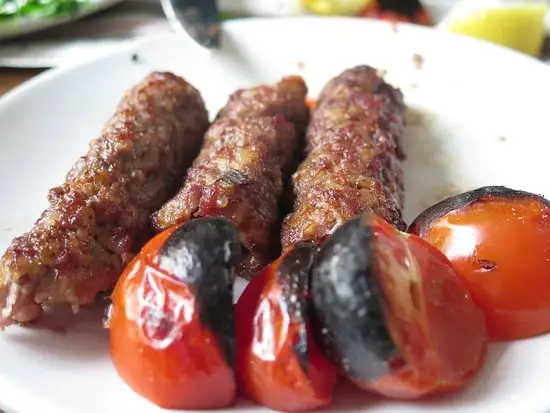
Kebapçı Beko
Hatay
If you’re planning a trip through Southeastern Anatolia, make sure to add Hatay to your route. Located in Turkey’s Mediterranean region, this unique city captivates visitors with its historical texture, cultural diversity, and extraordinary cuisine. With a history dating back to the Paleolithic Age, Hatay has hosted countless civilizations, becoming a true mosaic of cultures shaped by centuries. In 1939, following a referendum, Hatay officially joined the Republic of Turkey. Its name derives from the “Hıtaylar,” a Turkic tribe. Known as a land of religious tolerance, Hatay is home to the historic St. Pierre Church. Situated on the western banks of the Asi River, this ancient church sheds light on the early years of Christianity and fascinates visitors with its architecture. If you’d like to head a little higher, a walk up to the remains of the Monastery of St. Simeon is a rewarding experience. Although the structure has not survived fully intact, its location and the breathtaking views it offers are remarkable. Another must-see stop along your historical journey is the Titus Tunnel. Construction of this engineering marvel began under Emperor Vespasian during the Roman era and was completed by his son Titus. Surrounded by mythological tales, the tunnel is also known locally as the “Tinus Tunnel” or “Vespasian Tunnel.” While exploring Hatay, you may notice that some historical landmarks are undergoing restoration (such as the Archaeology Museum and St. Pierre Church). It’s a good idea to check the current status before your visit. With its cultural richness, religious heritage, natural beauty, and world-famous gastronomy, Hatay is an essential stop on any Southeastern Anatolia itinerary. Here, every step you take reveals traces of a different civilization.
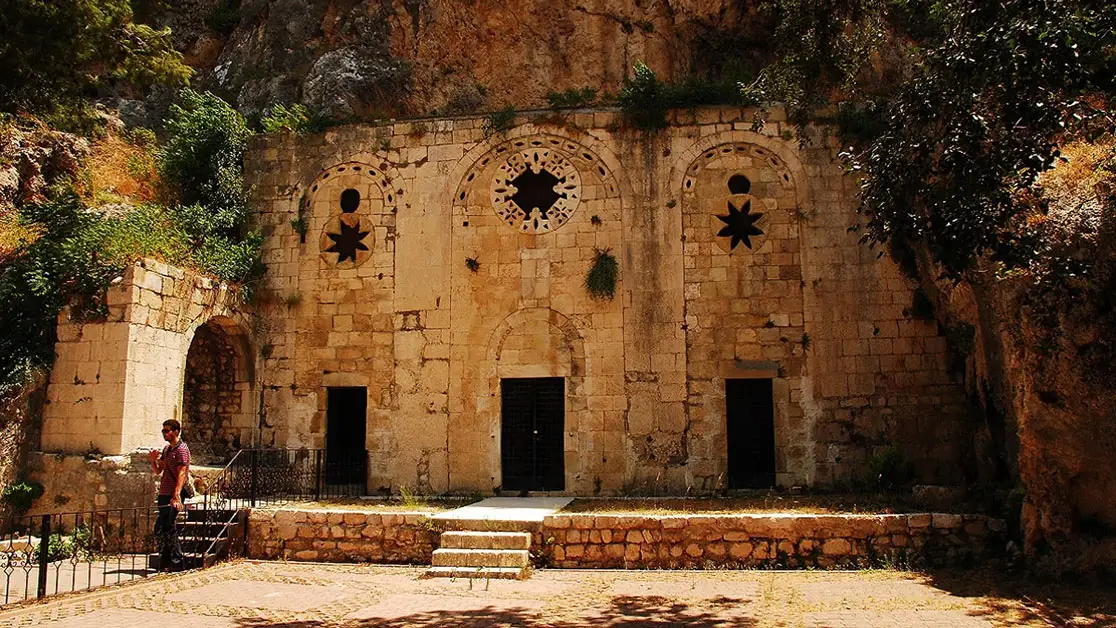
St. Pierre Kilisesi Hatay
In Hatay, eating is not just about filling your stomach, it's practically a cultural affair. If you want to start your day with Hatay's famous breakfast, you can choose Yusuf Dayı's Place. From warm olive oil with za'atar to curd salad, from pepper bread to surk, you'll find everything you're looking for. The breakfast plates are generous, the bread basket fills up quickly, and once you've had your fill of breakfast, you can enjoy your tea. There is always a familiar warmth at the tables. Künefe is available on every corner in Hatay, but Yusuf Usta's tray is different. The strands are thin, and the cheese is just the right amount of salty. Some plates may be a little too syrupy, but the golden brown surface cooked over coals is quite appetizing. It is one of the places that the locals insistently recommend. If you want to sit down for a meal and say, “Bring me whatever Hatay-style dishes you have,” you can head to Sultan Sofrası. They call stuffed meatballs ‘oruk’ and ashure “aşur.” The spinach and yogurt appetizer called borani is very light and appetizing. The service is fast, the portions are generous, and the flavors are familiar, like our mothers' cooking. For meat lovers, Avlu Restaurant is the perfect choice. Tepsi kebab, liver, and ali nazik are all served piping hot. It is particularly popular for its mezes. The quality of the meat is evident; when cooked, it melts in your mouth. Prices are reasonable for the area. Even if you go late at night, you can still enjoy fresh food. Pöç Kasabı is the place to go for sini kebab. Spiced minced meat is pressed into a tray and baked in the oven until it's rock-hard. The plate is simple but packed with flavor. The kebab made with zırh meat isn't like minced meat; you can really taste the texture of the meat. One plate is enough to fill you up, but you'll be left wanting another. The rustic atmosphere of the place doesn't detract from the flavor. You can't leave without stopping by Affan Kahvesi for dessert. The walls are adorned with old frames, and the tables seem to carry the dust of history. The cold sherbet contains ice-cold pudding topped with ice cream. It's not too sweet or bland, but just right.
When to Go on a GAP Tour?
The best time to visit the GAP region is when the weather is neither unbearably hot nor uncomfortably cold. This usually falls in the spring months. April, May, and the first days of June are beautiful times when nature comes alive, the sun is warm but not scorching. Similarly, from mid-September to early November is also an ideal period to travel; the heat gives way to cooler weather, the crowds thin out, and you can enjoy the region even more.
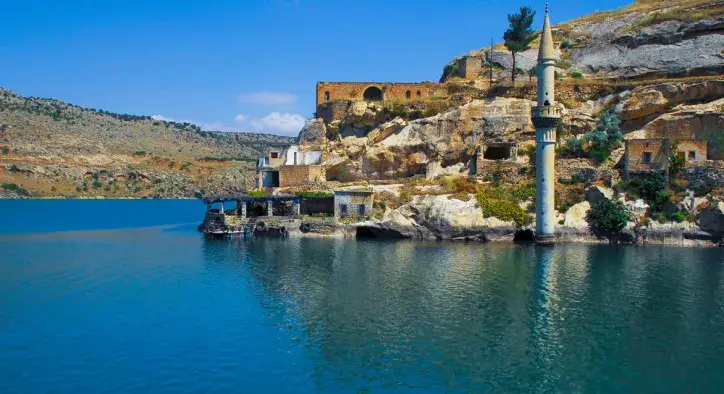
What to Pack for a GAP Tour
Once you’ve decided on your travel dates for the GAP tour, the next step is preparing your luggage. Exploring this region means lots of walking, facing warm or cool weather, and wandering from cobblestone streets to ancient ruins. That’s why comfortable walking shoes should be at the top of your list. Season-appropriate clothing that keeps you from sweating in the heat or getting cold in cooler weather will also make your journey easier. And if you’re planning to join local events like a sıra gecesi, don’t forget to bring a few outfits that are both stylish and comfortable.
- Quick-drying, breathable clothes for summer
- Warm sweaters and fleeces for winter
- Waterproof, insulated jacket or coat for rainy seasons
- Comfortable and durable walking shoes
- Sunscreen and moisturizer
- Powerbank (portable charger) for taking photos
- Necessary cables and chargers for devices such as camera, phone, laptop
- Travel pillow for bus or plane journeys
- Earplugs if you are sensitive to noise




